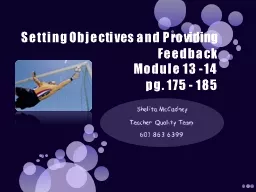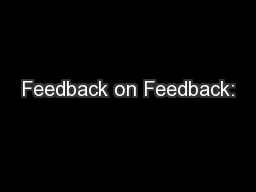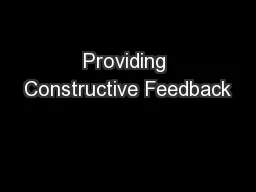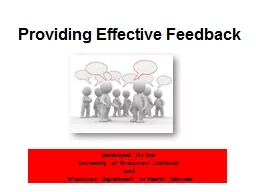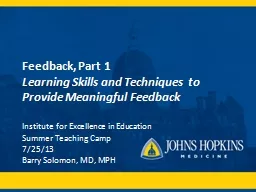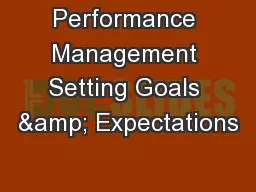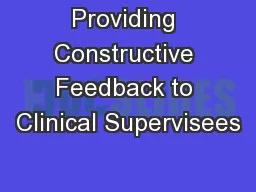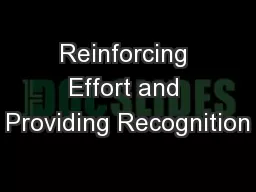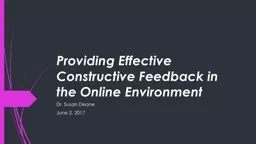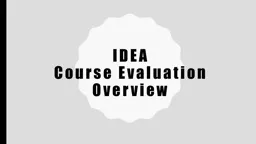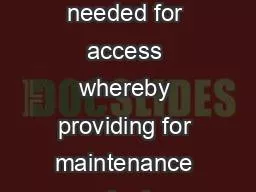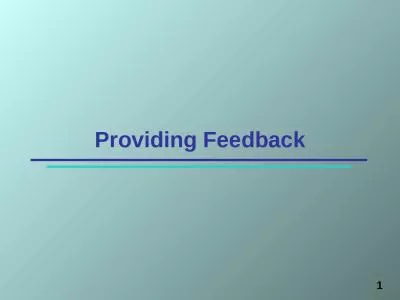PPT-Setting Objectives and Providing Feedback
Author : trish-goza | Published Date : 2016-12-04
Module 13 14 pg 175 185 Shelita McCadney Teacher Quality Team 6018636399 Research says Setting Objectives and Providing Feedback Yields a 23 percentile gain iBelieve
Presentation Embed Code
Download Presentation
Download Presentation The PPT/PDF document "Setting Objectives and Providing Feedbac..." is the property of its rightful owner. Permission is granted to download and print the materials on this website for personal, non-commercial use only, and to display it on your personal computer provided you do not modify the materials and that you retain all copyright notices contained in the materials. By downloading content from our website, you accept the terms of this agreement.
Setting Objectives and Providing Feedback: Transcript
Download Rules Of Document
"Setting Objectives and Providing Feedback"The content belongs to its owner. You may download and print it for personal use, without modification, and keep all copyright notices. By downloading, you agree to these terms.
Related Documents

